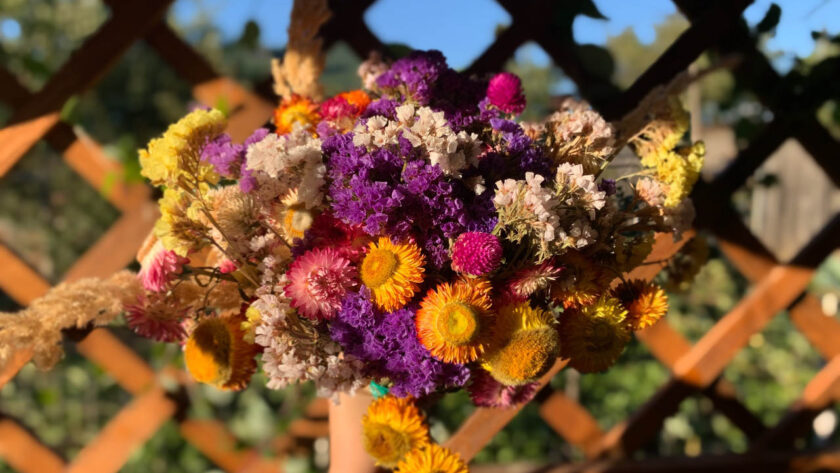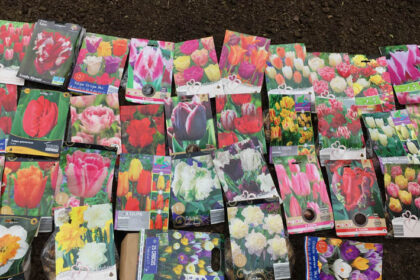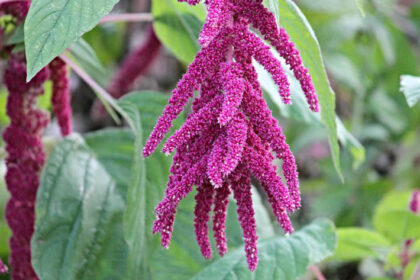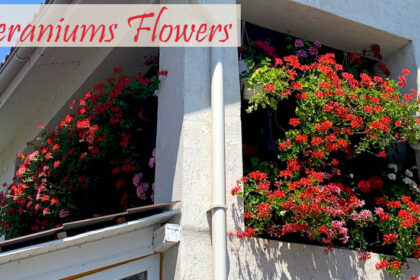I recently discovered dried flowers, and I think it’s one of the things that made me happy. I had heard of dried flowers before but never paid much attention to them. What was the point of cultivating them in my garden? A while passed and seeing these flowers around me in as many gardens as possible, I automatically changed my mind and said, why not try to plant these flowers? And I tell you, from now on, I did not fail!
Dried flowers have something that no flower can have, namely keeping them alive, as if you were going to pick them from the garden now. What could be more beautiful than to keep a fragment of your garden when everything has no more life? Now we can say that the chapter on flowers never ends.
There are many varieties of dried flowers, each by texture, their shape beautifying our garden and later the rooms of the houses.
Next, we will present some species of dried flowers that can dry that I have grown in my garden.
- Strawflower

The strawflower is part of the Asteraceae or Compositae family, part of the Gnaphalieae group, being an annual plant. The strawflower resembles a daisy in shape but has a big difference; its petals are rigid. This flower has a beautiful color palette, from shades of white to dark shades of bright red. Strawflower is a flower that we meet in summer, loving a lot of heat. It is a tall plant, so we must be careful where we plant it in our garden so as not to cover the tiny plants. The soil must be rich in minerals and well-drained. These plants multiply from the seeds they form after the flowers have dried.
2. Globe Amaranth

Another flower that we can have, both fresh and dried, for as long as possible, is globe amaranth. This plant first appeared in Central America and is part of the category of annual plants. They are straightforward to grow, planted towards the end of spring, and offer abundant flowering until autumn. The shape of the flowers, as their name implies, is globe-like, and the bright colors of purple, pink, red, and yellow attract pollinators. Globe amaranth loves the full sun to have rich growth. It grows in almost all soils, as long as the soil has good drainage.
3. Lavander

Lavender is a bushy plant that represents a true splendor in our garden. Besides the other flowers that can dry, this one has the benefit that it is a perennial plant that revives year after year, so we can enjoy its beauty without having to plant it every year. Indeed, the unmistakable perfume that emanates from the tiny purple flowers attracts us to this flower. This plant is not only for decoration; it is used in cosmetic products, culinary fields, or even medicinal purposes.
Lavender is a plant that will grow best in full sun. The soil must be one with good drainage, and if we want to see a more intense fragrance, we should plant lavender in more alkaline soil. Watering lavender is a plant that resists drought, so you must water it moderately if you want to multiply lavender, and you can do this through the seeds it produces or by cutting lavender shoots.
4. Statice

Don’t hesitate to plant statice flowers if you want long-lasting, brightly colored flowers. Your garden will undoubtedly become more beautiful with these flowers and more colorful. Statice flowers are flowers that grow vertically with robust stems, forming small flowers at the top, brightly colored. They start to bloom from the beginning of summer until late autumn. They will develop very well in a sunny part of the garden and have a more clayey, drier soil.
5.West Indian Cockscomb (Celosia Nitida)

Another plant species that will catch your eye with its vibrant colors is celosia. Celosia is a flower that is part of the amaranth family. There are several types of celosia, but we will talk about Celosia Nitida. What makes us plant it is its vibrant color. It is grown in summer and blooms in autumn. In addition to their use as garden plants for ornamental purposes, they can also be edible plants, their leaves having a taste similar to spinach. You must plant them in a sunny garden to have a rich inflorescence. They bloom in autumn, so they survive even at lower temperatures. They are propagated by the tiny black seeds that produce them—a little advice. Take care of the seeds because they are an endangered plant species.
How to dry flowers?

I have presented to you some of the flower species I planted in my garden. And I’ll tell you honestly that I didn’t regret it at all because I had fresh flowers all summer, I’ll have dried flowers all cold season, which is extraordinary.
I will give you some tips from my experience with drying flowers.
The first stage is harvesting the flowers from the garden.
Regarding this stage, we must carefully cut flowers with well-developed stems to dry correctly.
Once we have cut the flowers we want to dry, we start their preparation, remove the leaves from the stems, and cut the branches to the desired length.
The third stage is the formation of bouquets of both individual or multiple flowers to dry them. Then we will tie them with a string, so they don’t fall.

The last step is also the most important, namely, the actual drying of the plants. We prefer a darker, dry place to put the flowers to dry. They must be hung upside down to take their vertical shape when we make bouquets with them.
Once we have gone through all the steps to dry the flowers, we will certainly have the dried flowers for a long time.
Dried flowers are those flowers that will beautify our homes for as long as possible. In addition to the beautiful bouquets we can make from them, I also present what I have made to you—a beautiful flower crown.






